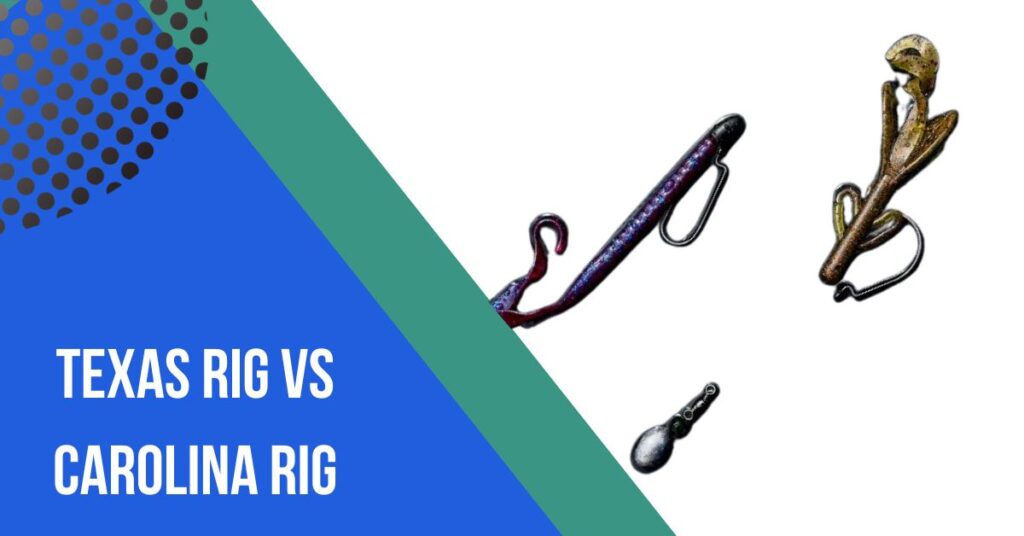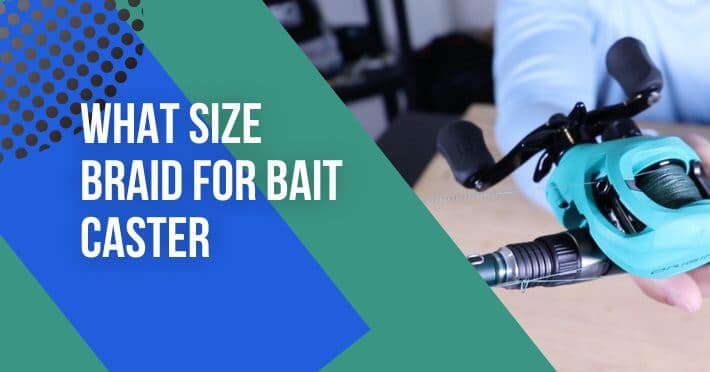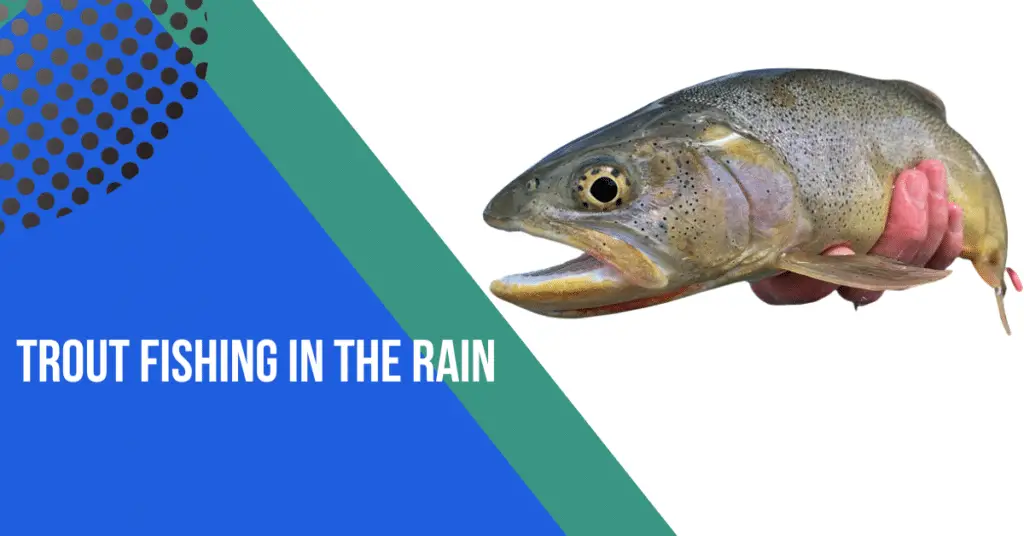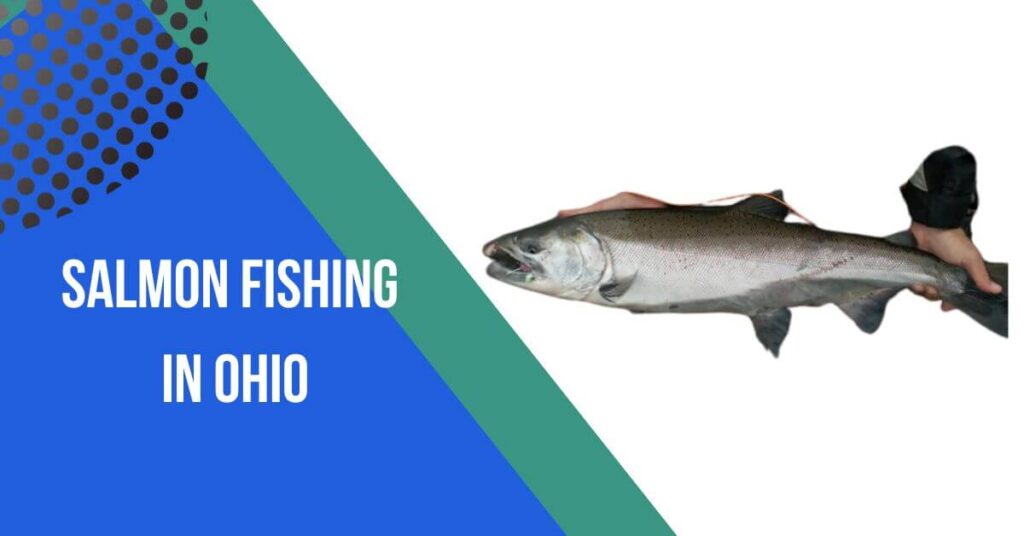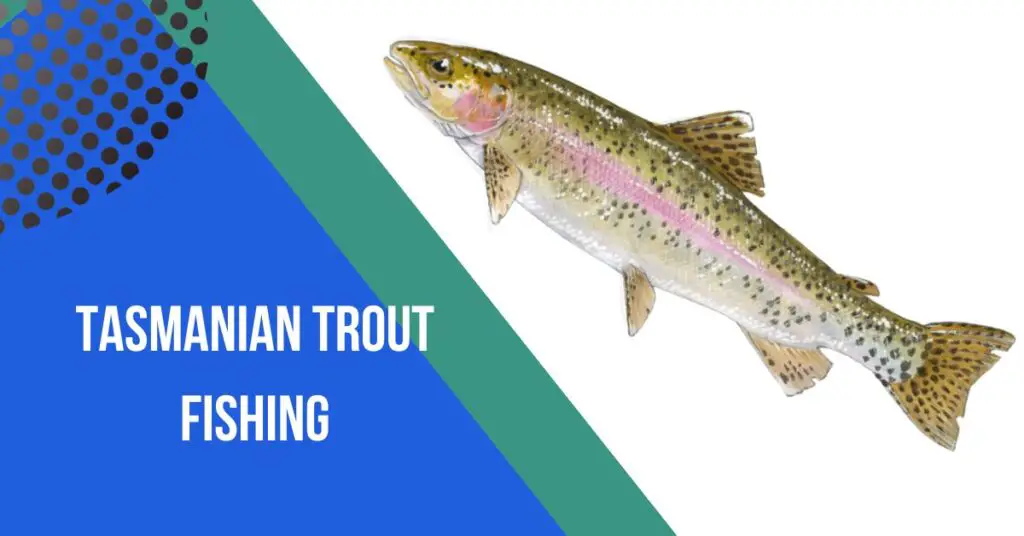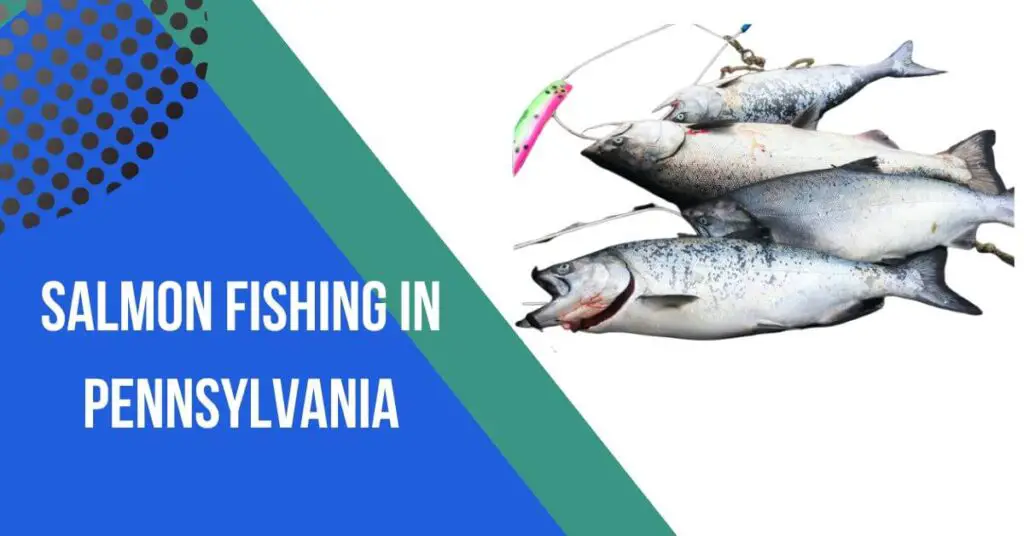Contents
- 1 Texas Rig Vs Carolina Rig:
- 2 I. Texas Rig
- 3 A. Description
- 4 B. Components
- 5 II. Carolina Rig
- 6 A. Description
- 7 B. Components
- 8 Bullet-Shaped Weight Placement:
- 9 Debate and Considerations:
- 10 Cover and Structure:
- 11 Fishing Depth:
- 12 Technique and Action:
- 13 Subtlety vs. Aggression:
- 14 Water Clarity:
- 15 Angler Skill and Preference:
- 16 Knowing When To Use Each Rig:
- 17 Texas Rig:
- 18 Carolina Rig:
- 19 FAQs:
- 20 Q: What is the primary advantage of the Texas Rig over the Carolina Rig?
- 21 Q: When should I use the Carolina Rig instead of the Texas Rig?
- 22 Q: Can I use both rigs on the same fishing trip?
- 23 Q: Which rig is better for clear water conditions?
- 24 Q: How do I choose the right weight size for the Texas Rig?
- 25 Q: Are there specific soft plastic baits recommended for each rig?
- 26 Q: Can I use a Texas Rig in deep water?
- 27 Q: Which rig is better for targeting bigger bass?
The Texas Rig and Carolina Rig are two popular techniques in bass fishing, each offering distinct advantages in different fishing scenarios. The Texas Rig involves a bullet-shaped weight secured directly above the hook, allowing for weedless presentations and effective flipping and pitching in heavy cover.
On the other hand, the Carolina Rig utilizes a sliding weight above a leader with a soft plastic bait, providing a more subtle and finesse approach for covering expansive areas and enticing bass in open water.
Anglers often debate the merits of these rigs, with the Texas Rig excelling in thick vegetation and the Carolina Rig proving effective in offshore situations. Understanding the strengths and applications of each rig is crucial for adapting to diverse fishing conditions and maximizing success on the water.`
Texas Rig Vs Carolina Rig:
I. Texas Rig
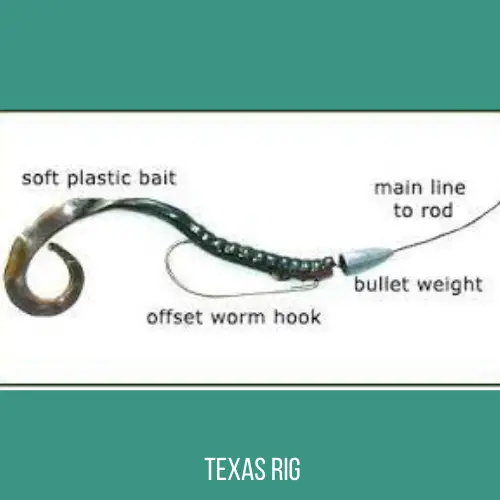
A. Description
1. Bullet-shaped weight placement: The Texas Rig involves positioning a bullet-shaped or cylindrical weight snugly against the nose of the soft plastic bait, ensuring a streamlined and weedless presentation.
2. Weedless presentation: The design of the Texas Rig minimizes the risk of snagging in vegetation, allowing anglers to effectively navigate through heavy cover without compromising the integrity of the setup.
B. Components
1. Bullet or worm weight: Typically made of lead, the weight is threaded onto the fishing line before the hook.
2. Offset worm hook: The hook is rigged through the soft plastic bait, concealing the point to reduce snags.
3. Soft plastic bait: Various types of soft plastics, such as worms, lizards, or creature baits, can be used based on angler preference and fishing conditions.
II. Carolina Rig

A. Description
1. Sliding weight above a leader: The Carolina Rig features a sliding egg or barrel-shaped weight positioned on the main line above a leader, creating separation between the weight and the bait for a more subtle presentation.
2. Soft plastic bait presentation: A soft plastic bait, usually a worm or creature bait, is attached to the leader, allowing it to move freely behind the weight and enticing fish with a natural appearance.
B. Components
1. Egg or barrel weight: Positioned on the main line, it slides freely, separating the weight and the soft plastic bait.
2. Leader: A monofilament or fluorocarbon line length connecting the weight to the soft plastic bait.
3. Offset worm hook: Similar to the Texas Rig, the hook is rigged through the soft plastic bait, but with the addition of the leader for enhanced movement.
Understanding the unique components and arrangements of the Texas Rig and Carolina Rig is essential for selecting the appropriate setup based on the fishing environment and angler preferences.
Bullet-Shaped Weight Placement:
Bullet-shaped weight placement is a critical aspect of certain fishing rigs, notably the Texas Rig. In the Texas Rig setup, the bullet-shaped weight is positioned snugly against the nose or head of the soft plastic bait. The design of the weight resembles a bullet, featuring a streamlined and tapered shape. This configuration serves several purposes:
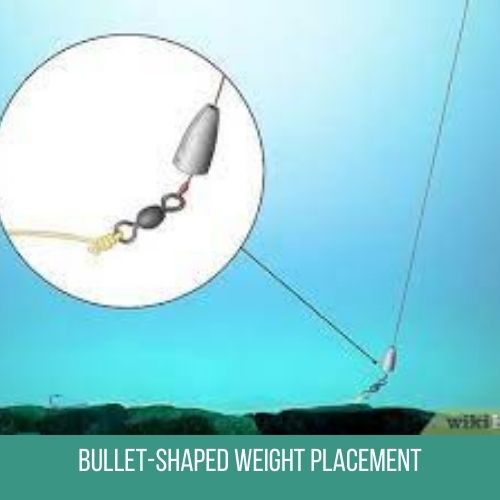
Weedless Presentation: Placing the bullet-shaped weight against the head of the soft plastic bait allows for a weedless presentation. The streamlined shape enables the entire rig to slide through vegetation and heavy cover with a reduced risk of snagging. This is particularly advantageous when fishing in areas with thick weeds, grass, or submerged structures.
Natural Action: The weight’s placement at the front of the bait provides a balanced and natural swimming motion. As the angler retrieves or manipulates the bait, the weight’s position allows for a lifelike movement, making it more enticing to predatory fish.
Versatility: The Texas Rig’s bullet weight can be easily adjusted based on the depth at which the angler wants to fish. This adaptability makes it suitable for a variety of water conditions and depths.
Sensitivity: The direct connection between the weight and the soft plastic bait enhances sensitivity, allowing anglers to feel subtle strikes or changes in the underwater terrain. This sensitivity is crucial for detecting bites and effectively hooking the fish.
In summary, the bullet-shaped weight placement in the Texas Rig not only facilitates a weedless presentation but also contributes to the overall effectiveness and versatility of this popular bass fishing technique.
Debate and Considerations:
The debate between the Texas Rig and Carolina Rig in bass fishing often centers around angler preferences, fishing conditions, and the strengths and weaknesses inherent in each technique. Considerations for choosing between these rigs depend on various factors:
Cover and Structure:
- Texas Rig: Excels in heavy cover like vegetation, submerged trees, and thick brush. The weedless presentation allows anglers to navigate through obstacles without snagging.
- Carolina Rig: More suitable for open water and areas with less cover, as the sliding weight and leader offer a subtler presentation. It is effective for probing the bottom of offshore structures.
Fishing Depth:
- Texas Rig: Easily adaptable to different depths by adjusting the weight size. Suitable for both shallow and deep presentations.
- Carolina Rig: Ideal for deeper water due to the sliding weight and leader setup, allowing the bait to move freely above the bottom.
Technique and Action:
- Texas Rig: Well-suited for flipping and pitching techniques in close quarters. Provides a more direct connection to the bait, offering precise control over its movement.
- Carolina Rig: Offers a more finesse approach, especially effective for dragging and hopping the bait along the bottom in a more extended range.
Subtlety vs. Aggression:
- Texas Rig: Can be worked aggressively through cover to trigger reaction strikes. Well-suited for a power-fishing approach.
- Carolina Rig: Typically used with a slower and more methodical retrieve, appealing to fish with a more subtle and natural presentation.
Water Clarity:
- Texas Rig: Effective in stained or muddy water where a more aggressive presentation may be necessary to grab the fish’s attention.
- Carolina Rig: Suited for clear water conditions where a finesse approach may be more effective in enticing wary bass.
Angler Skill and Preference:
- Carolina Rig: Attracts those who prefer a more relaxed and patient approach, working the bait methodically in search of less aggressive but larger fish.
Ultimately, the choice between the Texas Rig and Carolina Rig depends on the specific conditions, the angler’s preferred fishing style, and the behavior of the bass in the given environment. Experienced anglers often carry both setups to adapt to changing situations on the water.
Knowing When To Use Each Rig:
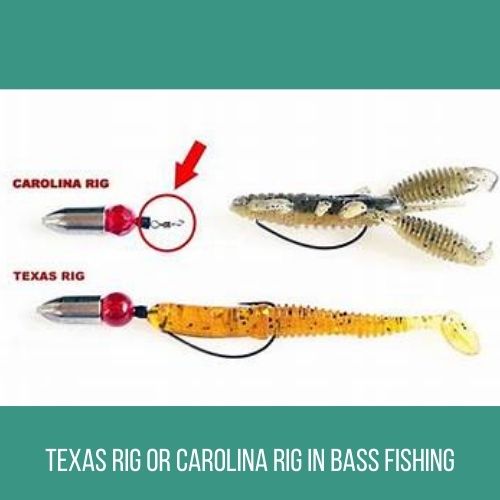
Knowing when to use the Texas Rig or Carolina Rig in bass fishing is crucial for maximizing success on the water. Here are considerations for choosing each rig based on various fishing scenarios:
Texas Rig:
Heavy Cover: Use the Texas Rig in areas with thick vegetation, submerged trees, or dense brush. The weedless presentation allows you to navigate through the cover without getting snagged.
Flipping and Pitching: Employ the Texas Rig when engaging in flipping and pitching techniques, especially in close-quarters situations. The direct connection to the bait provides precise control for accurate casts.
Aggressive Presentation: Opt for the Texas Rig in situations where an aggressive
presentation is needed to trigger reaction strikes. This can be effective in stained or muddy water where bass may rely on vibration and movement to locate prey.
Shallow Water: Suitable for fishing in shallow water, particularly when bass are positioned near the shoreline or in areas with limited depth.
Versatility: The Texas Rig is versatile and adaptable to various depths and cover types, making it a go-to choice in many different fishing scenarios.
Carolina Rig:
Open Water: Choose the Carolina Rig when fishing in open water or areas with less cover. The sliding weight and leader setup allow for a more subtle and natural presentation over a broader range.
Offshore Structures: Use the Carolina Rig for probing the bottom around offshore structures, such as humps, points, or drop-offs. The setup is effective for covering expansive areas in deeper water.
Finesse Approach: Opt for the Carolina Rig in situations where a finesse approach is necessary. This is particularly effective in clear water or when bass are less aggressive and require a more subtle presentation.
Deep Water: Suited for deeper water where the sliding weight allows the bait to reach the desired depth while maintaining separation from the weight.
Drag and Hop: Employ the Carolina Rig with a slow drag and hop retrieve, enticing bass with a methodical movement along the bottom.
Wary Bass: Use the Carolina Rig when targeting bass that may be more cautious or selective, requiring a slower and more cautious approach.
Being adaptable and understanding the strengths of each rig allows anglers to make informed decisions based on the specific conditions they encounter on the water.
Conclusion:
In conclusion, both the Texas Rig and Carolina Rig are essential for a well-rounded bass fishing approach. The Texas Rig excels in heavy cover and offers an aggressive presentation, while the Carolina Rig’s finesse approach is effective in open water and when bass are less active.
Anglers should be adaptable, choosing the rig that best suits the specific fishing conditions, cover types, and the behavior of the bass. By understanding the strengths and applications of each rig, anglers can enhance their versatility and increase their chances of success on any given day on the water.
FAQs:
Q: What is the primary advantage of the Texas Rig over the Carolina Rig?
A: The Texas Rig’s primary advantage lies in its weedless presentation, making it ideal for navigating through heavy covers such as vegetation and submerged structures without getting snagged.
Q: When should I use the Carolina Rig instead of the Texas Rig?
A: The Carolina Rig is more suitable for open water and areas with less cover. It excels in offshore fishing scenarios, providing a subtle and finesse approach for enticing bass in deeper water.
Q: Can I use both rigs on the same fishing trip?
A: Absolutely. Many experienced anglers carry both Texas and Carolina Rigs in their tackle boxes. This allows them to adapt to changing fishing conditions, cover types, and the behavior of the bass throughout the day.
Q: Which rig is better for clear water conditions?
A: The Carolina Rig is often preferred in clear water due to its finesse approach. The subtle presentation can be effective in enticing bass that may be more cautious in highly visible water.
Q: How do I choose the right weight size for the Texas Rig?
A: The weight size for the Texas Rig depends on the desired depth and the thickness of the cover. Heavier weights are suitable for deeper water and thicker cover, while lighter weights are appropriate for shallower presentations.
Q: Are there specific soft plastic baits recommended for each rig?
A: While both rigs can accommodate a variety of soft plastic baits, popular choices for the Texas Rig include worms, lizards, and creature baits. The Carolina Rig often pairs well with soft plastic worms and creature baits as well.
Q: Can I use a Texas Rig in deep water?
A: Yes, the Texas Rig is versatile and can be used in deep water by adjusting the weight size to reach the desired depth. It is effective for both shallow and deep-water applications.
Q: Which rig is better for targeting bigger bass?
A: Both rigs have the potential to catch larger bass. The choice depends on the specific fishing conditions and the preferences of the angler. Some anglers prefer the Texas Rig for power fishing in heavy cover, while others opt for the Carolina Rig’s finesse approach to target larger, more cautious bass.

